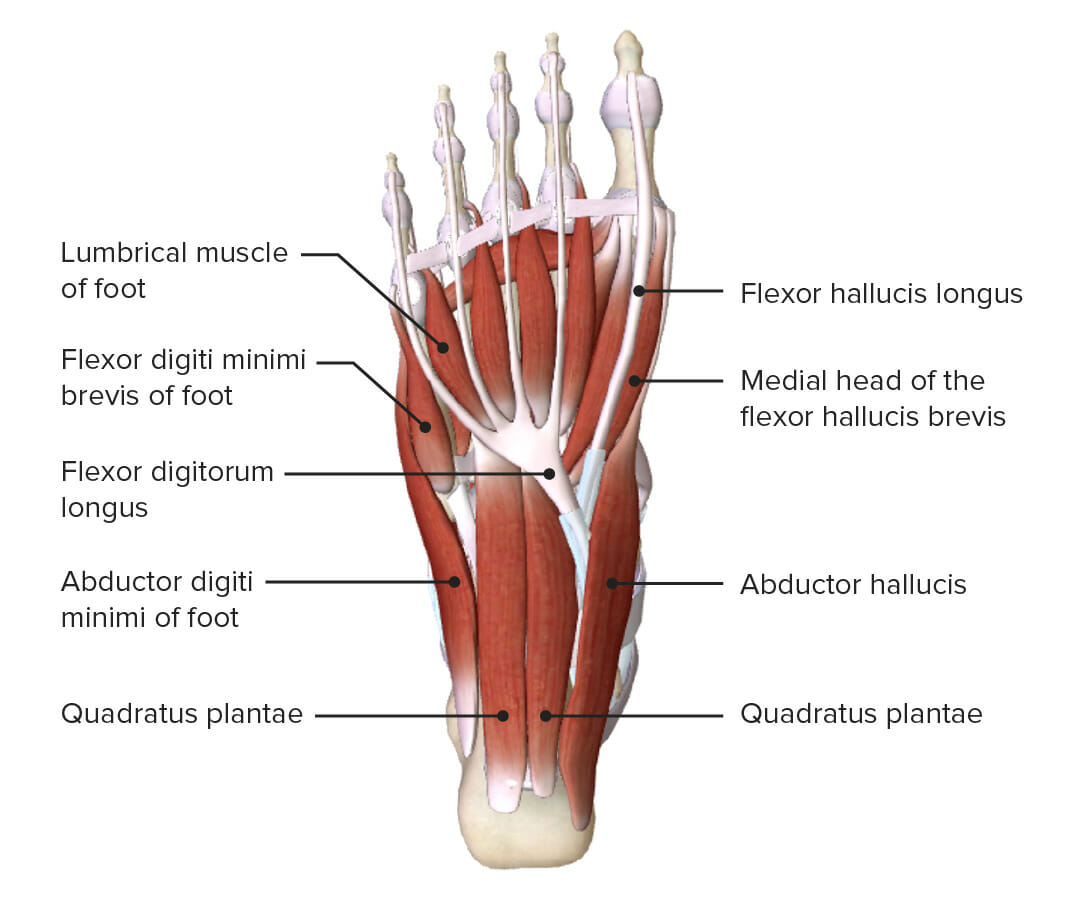Playlist
Show Playlist
Hide Playlist
Muscles of Sole of Foot: Layer 3 – Anatomy of the Foot
-
Slides 07 LowerLimbAnatomy Pickering.pdf
-
Download Lecture Overview
00:00 the hand. Now let’s move on to layer 3, which contains a few more muscles. We’re going to look at flexor hallucis brevis. We’re going to look at adductor hallucis and flexor digiti minimi brevis. Again, with adductor hallucis, just like adductor pollicis, we have two heads; an oblique and a transverse. So here we can see flexor hallucis brevis. 00:25 We can see it passing and then splitting onto either side of the great toe. We can see the oblique head, and we can see the transverse head of adductor hallucis. And then we can also look at flexor digiti minimi. So flexor hallucis brevis is coming from the cuboid and lateral cuneiform bones of the foot. It passes through the base of the proximal phalanx of the great toe, and it’s innervated via the medial plantar nerve. It’s involved in flexing the proximal phalanx of the great toe. Adductor hallucis has two heads, has the oblique head which is coming from the second to fourth metatarsals, and a transverse head which is coming from the metatarsal phalangeal joints of digits 3 to 5. They pass these two heads to a common insertion which is at the base of the proximal phalanx of the great toe. 01:22 This muscle is supplied by the lateral plantar nerve. It’s involved in, as its name suggests, adducting the first digit or the great toe. Flexor digiti minimi brevis, we can see, is running up towards the little toe. We can see next to it, we’ve got removed here, abductor digiti minimi. And flexor digiti minimi brevis passes from the base of the fifth metatarsal to the base of the proximal phalanx of the fifth digit. It’s innervated via the lateral plantar nerve. It’s involved in flexing the proximal phalanx of the fifth digit. Now let’s turn to the fourth layer. This is the interosseous layer between the
About the Lecture
The lecture Muscles of Sole of Foot: Layer 3 – Anatomy of the Foot by James Pickering, PhD is from the course Lower Limb Anatomy [Archive].
Included Quiz Questions
Where does the oblique head of the adductor hallucis originate?
- Metatarsal 2–4
- Metatarsophalangeal joints 3–5
- Base of the 5th metatarsal
- Cuboid cuneiform
- Lateral cuneiform
Which muscle is located within the third muscular layer of the foot?
- Adductor hallucis
- Flexor digitorium brevis
- Quadratus plantae
- Extensor hallucis brevis
- Extensor digiti minimi brevis
Customer reviews
5,0 of 5 stars
| 5 Stars |
|
5 |
| 4 Stars |
|
0 |
| 3 Stars |
|
0 |
| 2 Stars |
|
0 |
| 1 Star |
|
0 |




